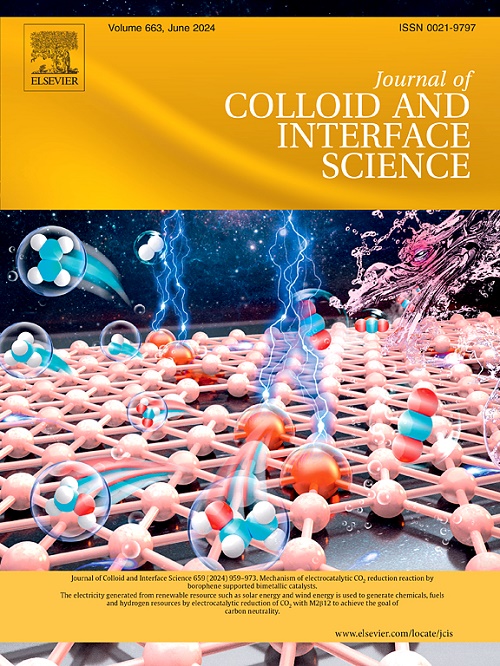Hierarchically periodic macroporous bismuth vanadate with engineered oxygen vacancies for enhanced photo-oxidation performance
IF 9.4
1区 化学
Q1 CHEMISTRY, PHYSICAL
引用次数: 0
Abstract
Controlling morphology and engineering surface defects are two widely employed strategies for enhancing catalyst activity, impacting the photodegradation of antibiotics and the photo-oxidation of water to generate oxygen. The hierarchical periodic macroporous structure reduces the migration distance of photo-excited carriers, lowers the electron–hole recombination rate, and increases the number of active sites by providing a larger surface area, all of which contribute to improved catalytic efficiency. A key aspect of surface defect engineering is the study of oxygen vacancies, which can act as electron donors, promoting carrier separation and thereby enhancing catalytic performance. The combined effects of these two features significantly enhance the catalyst’s photo-oxidation capabilities. By contrast to traditional methods that create oxygen vacancies during the synthesis process, this study introduces additional oxygen vacancies through a secondary treatment applied after the catalyst has been produced.

求助全文
约1分钟内获得全文
求助全文
来源期刊
CiteScore
16.10
自引率
7.10%
发文量
2568
审稿时长
2 months
期刊介绍:
The Journal of Colloid and Interface Science publishes original research findings on the fundamental principles of colloid and interface science, as well as innovative applications in various fields. The criteria for publication include impact, quality, novelty, and originality.
Emphasis:
The journal emphasizes fundamental scientific innovation within the following categories:
A.Colloidal Materials and Nanomaterials
B.Soft Colloidal and Self-Assembly Systems
C.Adsorption, Catalysis, and Electrochemistry
D.Interfacial Processes, Capillarity, and Wetting
E.Biomaterials and Nanomedicine
F.Energy Conversion and Storage, and Environmental Technologies

 求助内容:
求助内容: 应助结果提醒方式:
应助结果提醒方式:


